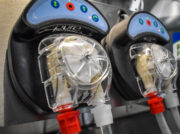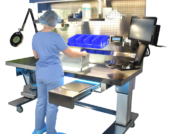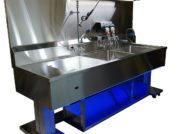
Four Practical AI Ideas SPD Leaders Can Pilot Now
In September we met with our Voice of the Customer council and followed up with breakout conversations to explore how sterile processing leaders are applying AI today. The themes were pragmatic. Teams want tools that support standards, training, and staffing without disrupting existing workflows.
processing leaders are applying AI today. The themes were pragmatic. Teams want tools that support standards, training, and staffing without disrupting existing workflows.
We sat down with Angus Bruce, CSS Director at Boston Children’s Hospital to talk about realistic ways AI can help sterile processing. Below are four focused applications you can test without overhauling your stack. Each one keeps culture, compliance, and patient safety in view.
1) AI that fits your tracking system
AI adoption starts with integration. If a tool cannot “talk” to your tracking platform, it adds clicks, leaves gaps in the record, and risks noncompliance. Make “interfaces with our tracking system” a hard requirement on any vendor checklist and verify how data flows in and out before a pilot or demo.
“If I’m trying to bring in a new product to help my team do their job more efficient, it has to have the ability to interface with my tracking system… you’re not going to get compliance with… additional steps.”
2) AI as an unbiased “umpire” at the workstation
Think supportive prompts and gentle cues that help techs do the right next step, not surveillance. Partner with HR early, set clear expectations, and design the rollout with as much care as the technology so guidance feels helpful rather than punitive. Start with a short pilot, gather feedback, and tune prompts to match your standard work.
“This is not meant to be a punitive thing. This is more meant to help you and guide you.”
3) Policy interpretation with verification
Use AI as a research assistant to assemble a draft that cross-references current standards and manufacturers’ IFUs, then keep human validation in the loop before anything is published. Build a repeatable review step where leaders confirm citations and language so the final policy matches your facility’s procedures. The goal is faster drafting without losing rigor or accountability.
“If you follow these steps, you cannot go wrong. But if you deviate from these steps, the potential of you doing something wrong increases.”
4) An annual “AI time-study” service
Run short, time-boxed camera studies to observe standard work, calculate realistic averages, and spot friction points, then remove the equipment at the end of the window. Frame the effort as temporary and improvement focused, and align with HR to set guardrails and signage. Use the findings to fine tune staffing, layout, and training plans, while avoiding permanent recording.
“If you do it as a trial period… in the lean world, they do time studies… you get the average of that person… If it’s used as a trial it’s great.”
Interested in digging into more VOC content?
Three Practical Ways SPDs Are Using AI Right Now
About: Voice of the Customer Committee
The Voice of the Customer Committee is a panel of healthcare and instrument reprocessing professionals who have graciously donated their time to share their expertise and guidance on current challenges faced by the instrument reprocessing community. Through sharing their insights, experiences, and best practices, we have been given the opportunity to share these findings with our readership. We’d like to thank our VOC members for their outstanding input and insights, as well as their time! Thank you for your continued partnership, and all you do.





